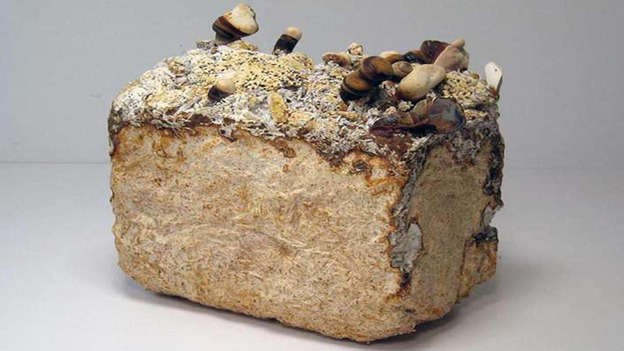Steel-reinforced concrete is the most common building material in the world. However, very few developing countries have the availability or economic capacity to produce their own steel or cement. They become easily trapped in exploitative import relationships with the developed world in their efforts to adapt to this globally standardized yet unsustainable building practice. Materials that were previously considered unwanted and/or low-strength may present possibilities to end this undesirable state of affairs. Building with materials that can be effectively cultivated on site or nearby and/or designing in compression to produce structures that can span space despite the low tensile capacity of their components may bring about changes that are desperately needed.
Furthermore, the 21st century will face a radical paradigm shift in how we produce materials for the construction of our habitat. The linear concept of “produce, use, and discard” has proven itself unsustainable in the face of scarce resources and largely urban populations that are increasing exponentially. Instead, to achieve a cycle of production, use, and re-use, we must explore alternative materials and approaches to construction that strive for creative innovation using the latest available technologies, tools, and methods. The Professorship of Sustainable Construction Dirk E. Hebel at the Karlsruhe Institute of Technology and the Block Research Group (BRG) at the Swiss Federal Institute of Technology (ETH) Zürich are combining their knowledge in materials, construction, structures, and geometry to address the problems posed by inefficiency in the realms of design and material use.
While Hebel’s team explores the cultivation of natural, regenerative materials and their use in construction optimized for the challenges presented in global urban environments, the BRG researches how methods from the past including building in compression to span space and the technique of graphic statics can be revived to take advantage of today’s technological and digital advances. The advent of computation and the use of sophisticated design tools present opportunities to create efficient and expressive structures. This opportunity enables us to realise the potential of “low-strength” materials as structural elements, and designing with the flow of forces enables their use in construction.
Utilizing regenerative materials such as bamboo and mycelium and a design based on form and force diagrams to show the geometry of the structure’s forces, the Professorship of Dirk E. Hebel and the BRG present the first full-scale structure designed using 3D graphic statics. It represents a vision for the ways we may move beyond the mining of our construction materials to their cultivation and growth. It suggests ways that efficiency of digital design and engineering and efficiency of (scarce) resources can combine forces to question current practice and to propose alternative, more sustainable approaches.




